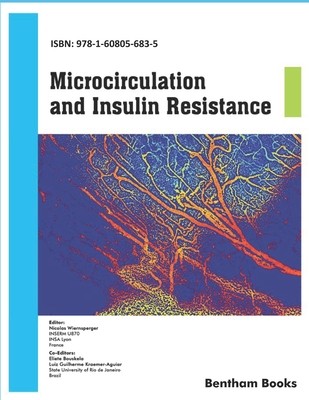
- We will send in 10–14 business days.
- Publisher: Bentham Science Publishers
- ISBN-10: 160805683X
- ISBN-13: 9781608056835
- Format: 21.6 x 27.9 x 1.1 cm, softcover
- Language: English
- SAVE -10% with code: EXTRA
Microcirculation and Insulin Resistance (e-book) (used book) | bookbook.eu
Reviews
Description
Insulin resistance is the main factor involved in the occurrence of the metabolic syndrome and later development of type2 diabetes. Despite decades of research on hormone's target tissues and the identification of most diverse candidates, the factors responsible for insulin resistance are still largely undefined. There is also a large discrepancy between in vitro and in vivo insulin sensitivity. Finally it is increasingly demonstrated that insulin resistance is found very early in life, long before metabolic syndrome is established. In search for commonalities, this book deals therefore with a new hypothesis considering microcirculation as one prime, possibly causal effector of insulin resistance. To present this novel hypothesis, the specificities of microvascular physiological mechanisms and the limits of interpretations of data according to the measurement techniques used are first thoroughly described. Several chapters deal with experimental and clinical investigations showing the involvement of microcirculation in insulin resistance. This book provides sound support for microcirculation being linked to insulin resistance at least in a bidirectional way. Supportive evidence suggests that microvascular dysfunction may lie upstream of insulin resistance in many of them. While this is still a hypothesis, the authors believe that there is enough data supporting it and hope that this book will stimulate researchers to provide the necessary final proofs.
EXTRA 10 % discount with code: EXTRA
The promotion ends in 20d.16:55:11
The discount code is valid when purchasing from 10 €. Discounts do not stack.
- Publisher: Bentham Science Publishers
- ISBN-10: 160805683X
- ISBN-13: 9781608056835
- Format: 21.6 x 27.9 x 1.1 cm, softcover
- Language: English English
Insulin resistance is the main factor involved in the occurrence of the metabolic syndrome and later development of type2 diabetes. Despite decades of research on hormone's target tissues and the identification of most diverse candidates, the factors responsible for insulin resistance are still largely undefined. There is also a large discrepancy between in vitro and in vivo insulin sensitivity. Finally it is increasingly demonstrated that insulin resistance is found very early in life, long before metabolic syndrome is established. In search for commonalities, this book deals therefore with a new hypothesis considering microcirculation as one prime, possibly causal effector of insulin resistance. To present this novel hypothesis, the specificities of microvascular physiological mechanisms and the limits of interpretations of data according to the measurement techniques used are first thoroughly described. Several chapters deal with experimental and clinical investigations showing the involvement of microcirculation in insulin resistance. This book provides sound support for microcirculation being linked to insulin resistance at least in a bidirectional way. Supportive evidence suggests that microvascular dysfunction may lie upstream of insulin resistance in many of them. While this is still a hypothesis, the authors believe that there is enough data supporting it and hope that this book will stimulate researchers to provide the necessary final proofs.


Reviews